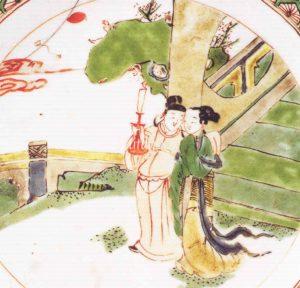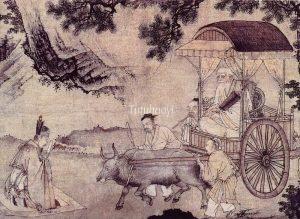Showing Results Containing
European descriptions of porcelain paintings that have story scenes tend to describe ‘figures and surroundings’, rather than identifying them. Thus, a large part of those beautiful stories intended by pot painters was lost in the description. Here...
Evidently, Zhao Kuangyin (赵匡胤 927–976), Emperor Taizu of the Song dynasty (宋太祖), often paid unofficial surprise visits to his courtiers. As a result, his ministers did not dare to change their official attire into casual wear even when they returned home from court. They had to be ready for imperial visits any time and d...
According to the Account of Wu (吴志) in The Records of the Three Kingdoms (三国志), Lu Ji (陆绩), was a native of Wu. At the age of six, he had an opportunity to meet Yuan Shu (袁术), who at the time controlled the region of Jiujiang. Yuan Shu put out some tangerines for him to eat. Lu Ji surreptitiously stuffed three of them in...
Romance of the Western Chamber (西厢记 Xixiang ji) is the most popular love comedy in late imperial China. In the story, Scholar Zhang (张生 Zhang Junrui) falls in love with a beautiful lady named Cui Yingying (崔莺莺), who happens to be stranded in a monastery with her widowed mother and, after plenty of twist...
Laozi (Lao Tzu 老子) is a great ancient Chinese thinker, to whom a five-thousand-character book ‘Dao de jing 道德经’, or The Scripture of the Way and Virtue, has been attributed. He is regarded as the founder of philosophical Daoism (Taoism), daojia 道家, because of his profound insights to life and t...




